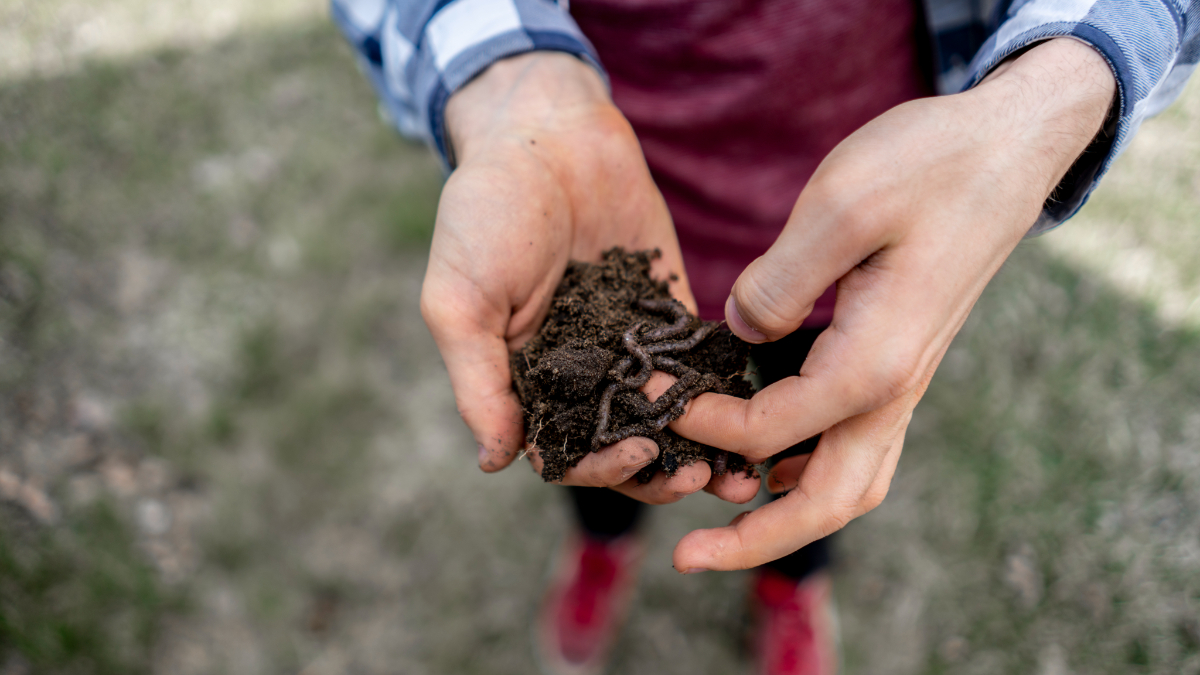
Whether you like them or not, they are an important part of good soil. The presence of earthworms in your lawn or garden indicates good soil with a high level of organic material. Worms in your soil should not be a source of concern in most circumstances. In fact, the absence of worms in your soil suggests a barren soil devoid of organic matter, which is cause for alarm.
An Earthworm’s Job
Worms, for the most part, go unnoticed as they work to condition the soil and reside deep within the root zone. Earthworms, on the other hand, tend to travel to the surface in the spring, fall, and other periods of high precipitation and leave their castings on the lawn. Worm castings are little mounds or lumps on the lawn that are essentially worm excrement—albeit extremely nutritious dung. These excretions are the nutrient-dense leftovers of digested plant matter and soil that have passed through the worms, which are incredibly useful to the lawn. Earthworms also aid in the decomposition of thatch, as well as the creation of useable nitrogen in the soil. Finally, the movement of the worms through the soil profile functions as natural aeration, allowing air and water to travel from the surface throughout the soil profile. Earthworms and their castings are beneficial to a garden and grass on practically every level. Homeowners who want billiard-table smooth turf lawns, on the other hand, maybe concerned about the signs that earthworms leave on their lawns.
What is the issue?
For some who find a less-than-perfect grass lawn irritating, excessive earthworm castings on lawns can be a problem. Worm castings are primarily disliked because they are unsightly. The nutrient-rich feces mound develops a dark blotch on the lawn approximately the size of a quarter. When multiplied by the amount of worms that could be present, it can have a significant impact on the appearance of a lawn for which most home owners are guided through Lawn Care Experts. When there are several worm castings present, a poor, thin lawn that is trimmed low can appear even worse. An abundance of castings on a lawn generates a rough surface over time, which can cause scalping when mowed and possibly provide a tripping hazard. Finally, an overabundance of earthworms can attract secondary pests.
Disadvantages of Earthworm in your yard
Unsightly castings
It’s typical to find a few castings around the yard. However, castings can sometimes dominate the grass, especially if there are a lot of worms in the soil. These unattractive castings might be a deal breaker for some homeowners who result in reaching out to a Professional Pest Control Company, who will assess your lawn for potentially harmful insects, and then implement a yard pest control plan to minimize their presence. They can also provide ongoing lawn insect control services to keep your yard safe from insect damage.
Uninvited wildlife
Your yard may attract hungry critters such as moles, gophers, and armadillos if your soil is brimming with earthworms. In their search for food, these pests can rip up your lawn, damaging its curb appeal as well as your hard work.
Benefits of earthworms in your yard
Improved soil health
With their worm castings, earthworms improve soil fertility (aka worm poop). Soil, organic materials, and bacteria are consumed by earthworms, and as this material travels through their digestive tract, it gets more concentrated with nutrients and microbes. As a result, the casting is more nutrient-dense than the earth it surrounds. Your grass, like you, requires vitamins and minerals to grow strong and healthy. The earth provides nutrients to your lawn. Fertile soil is rich in nutrients for your grass, such as potassium, nitrogen, and phosphorus, whereas sterile soil is deficient in these nutrients. The healthier your lawn is, the more fertile your soil is. Your lawn will be less susceptible to weeds, pests, and disease if it is in good health. Worms, on the other hand, also add nutrients to soil once they die, they decompose and add nitrogen to the soil.
Decomposed thatch
Between the soil surface and the grass blades, thatch is a layer of dead and living organic material. Earthworms enjoy eating organic matter, which means they enjoy eating thatch. A little layer of thatch is beneficial to the lawn, but a thick covering can cause problems. A half-inch or thicker coating of thatch can become a breeding ground for pests and illness. It can also block the flow of water and fertilizer into the soil.
Improved soil structure
Earthworms loosen dense soil by building tunnels as they wriggle and eat, allowing water, nutrients, and oxygen to flow freely. If your turf grass can’t drink, feed, or breathe, it will struggle to thrive, thus having these natural aerators in your lawn is always beneficial.
Repaired topsoil
Earthworms contribute to topsoil healing by depositing nutrient-rich castings on the soil’s surface. Topsoil is the earth’s top, outermost layer of soil, and it is required for agricultural and plant growth due to its high fertility. Nonetheless, the planet’s topsoil is rapidly eroding as a result of erosion. Homeowners may maintain topsoil and battle erosion in a variety of ways, including encouraging earthworm activity in the lawn and garden.
Deeper roots
Earthworms create space for plant roots to grow deeper into the soil by digging tunnels. The deeper the root system of your grass, the healthier and stronger the turf will be.
Free mulch
Consider earthworm castings in your yard as free garden mulch. The number of earthworm castings (little heaps of soil) in your lawn is determined by the size of the earthworm population and how frequently they rise to the surface.
Rake up the castings and toss them on your garden when they’re dry. The castings enrich the garden soil with nutrients and plant nourishment, and their high concentration of bacteria can help keep pests and illnesses at bay. (Alternatively, you can add them to your compost pile.)
Dealing With Castings
Worms’ benefits to the soil far outweigh the minor difficulty of dealing with their castings. However, there are some practical and environmentally appropriate options for dealing with worm castings on a lawn:
- When the castings are dry, rake or sweep them across the lawn. This spreads a natural fertilizer across the turf while also breaking up the unattractive lumps. In the fall, power-rake the lawn to prevent uneven turf from forming.
- Don’t overwater your plants. If the soil is constantly moist, earthworms will stay at the surface, but if the top few inches of soil are dry, they will move deeper in quest of moisture.
- Keep the lawn healthy and mowed high to hide the castings and reduce their ugliness.
- Press the castings down using a roller. However, the bumpiness will persist over time, perhaps causing soil compaction.
- Lawns that have become uneven and lumpy as a result of years of casting build-up may require restoration or rebuilding, depending on the extent of the damage. 2 Moderately rough turfs can be remedied with topdressing and overseeding. Aeration and rolling may be required in more severe cases to obtain smoothness.




